As an Amazon Associate we earn from qualifying purchases.
Can you grill on a Traeger without smoke flavor?
If the question “can you grill without smoke on a Traeger?” is in your mind, then the short answer is no. Keep in mind that there will always be smoke when there is a fire. However, there are ways you can grill on a Traeger with less smoke.
The ideal outdoor cooking experience involves grilling food with a perfect char and smoky flavor using one of the best grill brands, Traeger. However, some people are not fond of the strong smoky flavors brought by the grill’s smoke. Moreover, not all dishes call for that taste. So you might wonder, can you grill on a Traeger without smoke? We’ll answer that and more in this blog.
Can you grill on a Traeger without smoke?
The first one is by setting the grill to a higher cooking temperature. This way, there will be less smoke, thus cooking your food faster.
Another one is to use pellets wisely. To do this, let’s understand how Traeger pellet grills work first.
When you pour the wood pellets into the hopper, these pellets will be moved and burned in the fire pot. Once in the fire pot, an electric rod will heat the pellets, causing them to produce smoke.
The smoke will disperse and travel to the chimney. What you should do to reduce the smoky flavor is to keep the chimney vent open.
More tips on how can you grill on a Trager without smoke, or at least minimize the smoky flavor, will be discussed below.
What food can you cook on a Traeger without making it smoke?
If you aim to grill on a Traeger with as little smoke as possible, you can try cooking sandwiches, burgers, desserts, vegetables, and other food that needs to be cooked faster. This way, there will be less exposure to smoke, giving less smoky flavor to your food.
Traeger grills are famous for their versatility since most of them can function as both grill and smoker. Thus, you can cook almost anything you can in a typical oven. Moreover, since Traeger grills are designed for milder, cleaner smoke, they are ideal for cooking meats that need to be cooked for many hours, like briskets or ribs.
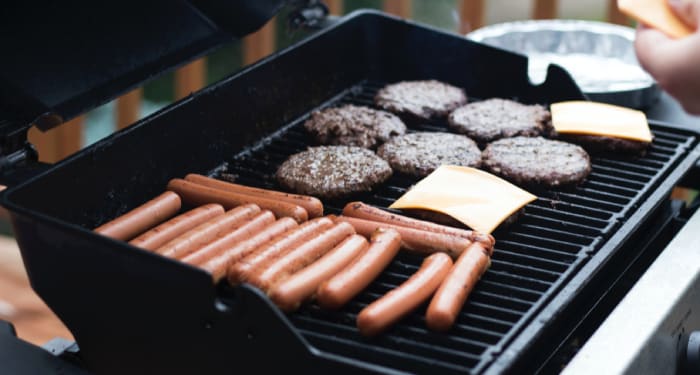
How can I grill without smoke?
Even if you are using a grill, not all the food items you cook on call for a smoky taste. Fortunately, Trager grills are known to produce a mild smoky flavor when used at high temperatures.
So as for the question, can you grill on a Traeger without smoke? The answer is you can only minimize the smoky flavor by following the tips below:
1. Use quality pellets
High-quality pellets produce cleaner smoke, thus reducing the smoky flavor of your food. There are plenty of Traeger pellet flavors for grilling and smoking.
Using quality pellets will produce a lesser amount of ash and prevent your food from losing too much moisture.
READ ALSO: Can I use wood chips in a pellet smoker?
2. Clean your Traeger grill before grilling
Cleaning your grill reduces the smoky taste of your food. This is because it prevents the grill from building up grease, which results in a strong, stale, smoky flavor.
Moreover, keep in mind that oils and grease can ignite up to 450°F. So, ensure that you clean the tray and grill before setting your grill to a high temperature.
3. Set the grill to high temperature
Keep in mind that cooking at low temperatures will result in more smoke than using your grill at a high grill. Use quality pellets for lesser and cleaner smoke and set the temperature to 350 ? or higher.
Moreover, lower temperature means lower heat. Thus, the smoke stays longer on the food, resulting in a smoky flavor. On the other hand, cooking food quicker using a high temperature means less time to absorb smoke.
How to avoid too much smoke flavor from a pellet grill
To avoid too much smoke flavor from a pellet grill, make sure to set it at high temperatures. Keep in mind that pellet grills act as woodfired ovens since the pellets used are also made from wood dust.
This means that the higher the temperature is, the faster the food will be cooked. As a result, the food will have a less smoky flavor since it is not exposed to the fire from the wood for a more extended period.
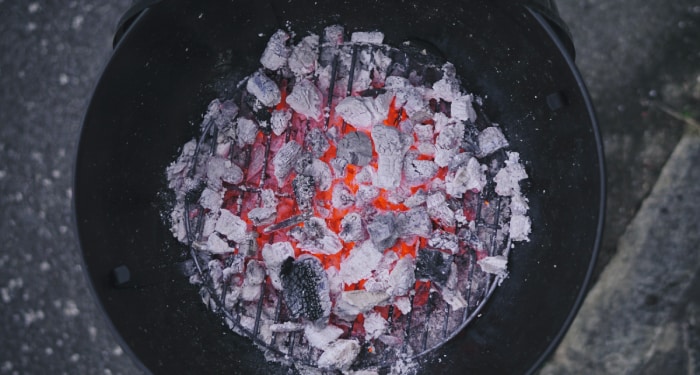
Is there charcoal that doesn’t smoke?
All types of charcoal have a natural tendency to smoke when first lit. However, the smoke should calm down after a few minutes. If you want your charcoal to prevent it from smoking too much, make sure that it is dry.
When your charcoal is damp, it will give off more smoke as it struggles to combust properly. Moreover, food drippings and grease in your coal lead to more smoke. Thus, keep your charcoal clean from debris and prevent it from getting wet or damp.
How do I make my charcoal grill not smoke?
First is to clean your grill from oil or grease buildup before cooking. This ensures that these food drippings will not contribute to the burn, eliminating the possibility of emitting more smoke.
Don’t forget to rinse and wipe the grill thoroughly after cleaning it to remove any traces of chemicals or food residue left behind while cleaning.
It would be best if you used something that produces less smoke, such as coconut, which costs as much as coal as well. While cooking on a charcoal grill, reduce the heat by closing the vents to prevent excess flames and smoke from dispersing outside.
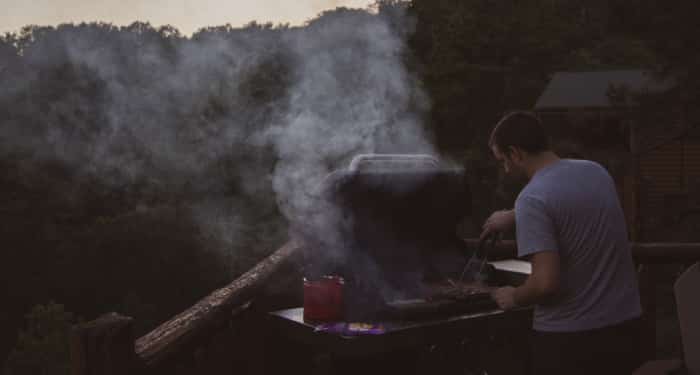
Can you grill on a Traeger with an open lid?
Ideally, the lid should always be closed when using a Traeger pellet grill, but this is not compulsory. If you keep the lid closed while grilling, the cooking temperatures will be maintained because pellet grills use indirect heat, unlike propane or charcoal grills. After placing the meat on the grill, close the lid and only check it periodically when you are ready to flip the meat.
However, you can keep the Traeger lid open while cooking if you are all about building flavor, especially when searing meat.
This is to ensure that you reach the desired temperature level while also keeping an eye on flipping the meat. As a result, you will get the ideal flavor on each side of the meat.
How hot does a Traeger grill get on high?
The high setting on a Traeger grill is typically at 350°F. However, you can also set it to a higher temperature, such as 1200°F. Such temperatures will make sure that the Traeger grill is hot enough to sear but not so high that it burns the food. For best results and to create grill marks on your meat, ensure that you preheat your grill for 10 to 15 minutes.
Does everything taste smoky when cooked on a Traeger?
The Traeger grill is known for giving a smoky flavor to the meat when left to smoke at low temperatures for long periods. However, if you set the grill at a high temperature, starting from 350°F, the food will not taste smoky.
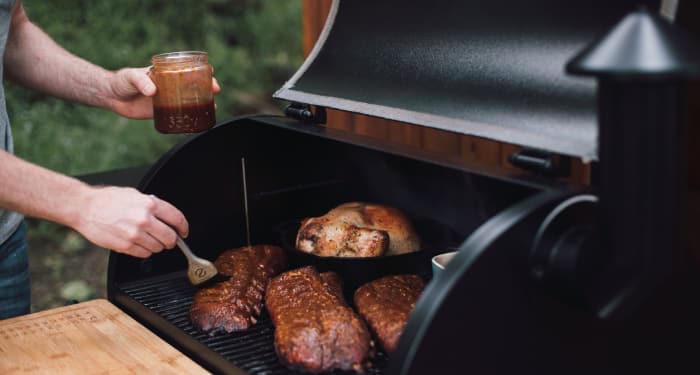
What causes BBQ to smoke?
These organic compounds will break down through a process known as combustion, where fuel and oxygen enter a thermal conversion. As a result, carbon dioxide and water vapor are produced, resulting in smoke.
You can’t prevent smoke from forming when you make BBQs. So, what causes BBQ smoke? Barbecuing typically requires hotter temperatures. As a result, it produces more volatile organic compounds in the air.
Although smoke is natural when cooking BBQs, you can sometimes think that the smoke might be too much. This happens when you close the lid too soon when cooking, which cuts the burning, starving your fire of oxygen, resulting in too much smoke. Grease buildup is also one of the reasons for excessive smoke.
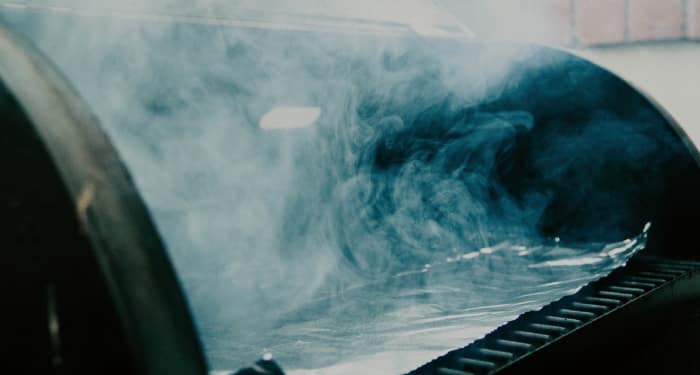
Can you use a Traeger grill without pellets?
Just like the question “can you grill on a Traeger without smoke?”, the answer to “can you use a Traeger grill without pellets?” is also no. This is because wood pellets are the primary fuel source when using a Traeger pellet grill. In case you run out of pellets while cooking, you need to refill the hopper with fresh ones.
Keep in mind that the Traeger grill can’t work without the wood pellets, even if you use charcoal or any natural gas. When the temperature of the grill starts to drop, this means that you are running out of pellets. Eventually, the power will turn off automatically, and you have to restart grilling.
Conclusion: Can you grill without smoke on a Traeger?
Smoky flavors do not suit all types of food, especially if you aim to make dessert or pizza recipes. Fortunately, you can grill on a Traeger with as little smoke as possible by setting the temperature to high, typically at 350°F. Check out some authentic grilled recipes and see which ones are ideal for cooking on a Traeger grill.
